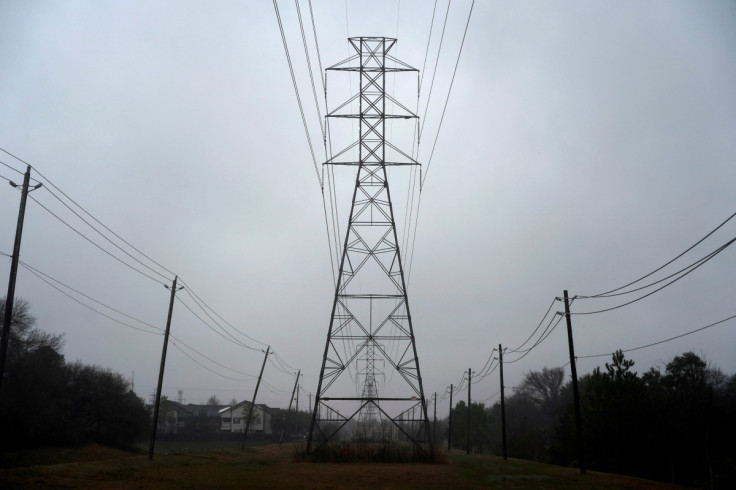Texas Electrical Grid Still At Risk In Extreme Weather -Dallas Fed

The Texas electrical grid is still vulnerable to severe weather despite safeguards following a deadly February 2021 deep freeze that brought widespread power outages, the Dallas Federal Reserve said on Tuesday.
Since the freeze roughly two years ago, which caused key components of the state's electrical system to fail, Texas has introduced regulations to weatherize its grid.
The Federal Reserve Bank of Dallas called for increased enforcement of those standards and more incentives to boost thermal power generation and Texas' so-called enhanced demand-response programs, which can include paying large power customers to curtail electricity use during peak demand.
The moves "would help ensure the power grid stands up to future demand growth and the challenges of extreme weather," Garrett Golding, a senior business economist at the Dallas Fed, said in a note.
The state's grid, which the Electric Reliability Council of Texas (ERCOT) primarily operates and the Public Utility Commission (PUC) of Texas oversees, avoided rolling blackouts during severe cold weather last month, which scientists have partly attributed to climate change.
Representatives for ERCOT and the Texas PUC said the performance during the winter storm, along with other severe temperatures that have led to surging demand since early 2021, is proof that grid reforms have been successful.
"The reforms implemented are working, and as a result, the reliability and resiliency of the grid is stronger than ever before," ERCOT said in an email.
Texas PUC spokesperson Ellie Breed said the grid now needs more on-demand power generation to meet growing demand from the second largest U.S. state, adding that the commission will vote this week on adding power generation and on other grid-related issues.
Still, last month's storm sent some warning signals about work still needed to be done some, Golding's note said. Power plants and natural gas facilities failed during the recent winter storm, putting the electrical system at risk as demand surged to 73,000 megawatts, close to its winter record high set the 2021 freeze, Golding said.
Natural gas production also dropped by about 25% during the December winter storm as wells froze in even though temperatures were roughly 10 degrees Fahrenheit warmer than February 2021 weather, the note said.
"The cold snap last month demonstrated that progress has been made, but it also exposed the remaining vulnerabilities as electricity demand increases and extreme weather becomes more common," Golding wrote.

© Copyright Thomson Reuters 2024. All rights reserved.





















